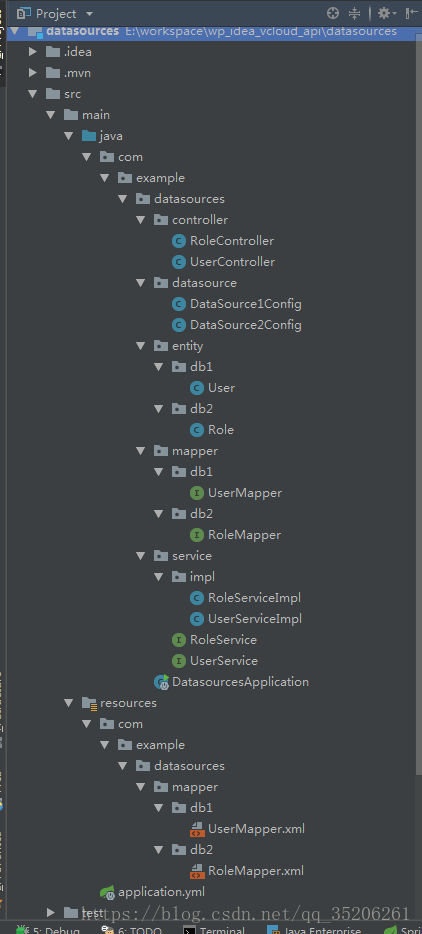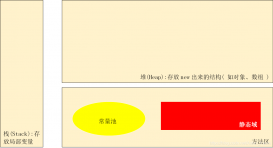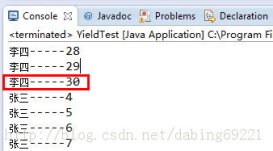一. 简介
俩个数据库db1,db2, db1数据库的mapper.xml和db2数据库的mapper.xml分别放到不同的目录下, 通过给不同的目录配置不同的数据源,并分别监控各自的事务。
已有新版方案: Mybatis Plus整合多数据源和读写分离,请使用新版;
二. sql脚本
db1数据库的user表:
|
1
2
3
4
5
|
CREATE TABLE `user` ( `id` int(11) NOT NULL, `name` varchar(255) DEFAULT NULL, PRIMARY KEY (`id`)) ENGINE=InnoDB DEFAULT CHARSET=utf8; |
db2数据库的role表:
|
1
2
3
4
5
|
CREATE TABLE `role` ( `id` int(11) NOT NULL, `name` varchar(255) DEFAULT NULL, PRIMARY KEY (`id`)) ENGINE=InnoDB DEFAULT CHARSET=utf8; |
三. 工程搭建
3.1 目录结构图

3.2 pom.xml文件
|
1
2
3
4
5
6
7
8
9
10
11
12
13
14
15
16
17
18
19
20
21
22
23
24
25
26
27
28
29
30
31
32
33
34
35
36
37
38
39
40
41
42
43
44
45
46
47
48
49
50
51
52
53
54
55
56
57
58
59
60
61
62
63
64
65
66
67
68
69
70
71
72
73
74
75
76
77
78
79
80
81
82
83
84
85
86
87
88
89
90
91
92
93
94
95
96
97
98
99
100
101
102
103
104
105
106
107
108
109
110
111
112
113
114
115
116
117
118
119
120
121
122
123
124
125
126
127
128
129
130
131
132
133
134
|
<?xml version="1.0" encoding="UTF-8"?><project xmlns="http://maven.apache.org/POM/4.0.0" xmlns:xsi="http://www.w3.org/2001/XMLSchema-instance" xsi:schemaLocation="http://maven.apache.org/POM/4.0.0 http://maven.apache.org/xsd/maven-4.0.0.xsd"> <modelVersion>4.0.0</modelVersion> <groupId>com.example</groupId> <artifactId>datasources</artifactId> <version>0.0.1-SNAPSHOT</version> <packaging>jar</packaging> <name>datasources</name> <description>Demo project for Spring Boot</description> <parent> <groupId>org.springframework.boot</groupId> <artifactId>spring-boot-starter-parent</artifactId> <version>2.0.4.RELEASE</version> <relativePath/> </parent> <properties> <project.build.sourceEncoding>UTF-8</project.build.sourceEncoding> <project.reporting.outputEncoding>UTF-8</project.reporting.outputEncoding> <java.version>1.8</java.version> </properties> <dependencies> <dependency> <groupId>org.springframework.boot</groupId> <artifactId>spring-boot-starter-web</artifactId> </dependency> <dependency> <groupId>org.mybatis.spring.boot</groupId> <artifactId>mybatis-spring-boot-starter</artifactId> <version>1.3.2</version> </dependency> <dependency> <groupId>mysql</groupId> <artifactId>mysql-connector-java</artifactId> <scope>runtime</scope> </dependency> <dependency> <groupId>org.springframework.boot</groupId> <artifactId>spring-boot-starter-test</artifactId> <scope>test</scope> </dependency> <dependency> <groupId>org.apache.commons</groupId> <artifactId>commons-lang3</artifactId> <version>3.4</version> </dependency> <dependency> <groupId>com.fasterxml.jackson.core</groupId> <artifactId>jackson-core</artifactId> </dependency> <dependency> <groupId>com.fasterxml.jackson.core</groupId> <artifactId>jackson-databind</artifactId> </dependency> <dependency> <groupId>com.fasterxml.jackson.datatype</groupId> <artifactId>jackson-datatype-joda</artifactId> </dependency> <dependency> <groupId>com.fasterxml.jackson.module</groupId> <artifactId>jackson-module-parameter-names</artifactId> </dependency> <dependency> <groupId>org.springframework.boot</groupId> <artifactId>spring-boot-starter-aop</artifactId> </dependency> <!-- 分页插件 --> <dependency> <groupId>com.github.pagehelper</groupId> <artifactId>pagehelper-spring-boot-starter</artifactId> <version>1.2.5</version> </dependency> <!-- alibaba的druid数据库连接池 --> <dependency> <groupId>com.alibaba</groupId> <artifactId>druid-spring-boot-starter</artifactId> <version>1.1.9</version> </dependency> <dependency> <groupId>org.springframework.boot</groupId> <artifactId>spring-boot-starter-thymeleaf</artifactId> </dependency> <dependency> <groupId>org.springframework.boot</groupId> <artifactId>spring-boot-starter-jdbc</artifactId> </dependency> <!-- atomikos transaction management --> <dependency> <groupId>org.springframework.boot</groupId> <artifactId>spring-boot-starter-jta-atomikos</artifactId> </dependency> <!-- swagger --> <dependency> <groupId>io.springfox</groupId> <artifactId>springfox-swagger2</artifactId> <version>2.6.1</version> </dependency> <dependency> <groupId>io.springfox</groupId> <artifactId>springfox-swagger-ui</artifactId> <version>2.6.1</version> </dependency> <!-- swagger --> </dependencies> <build> <plugins> <plugin> <groupId>org.springframework.boot</groupId> <artifactId>spring-boot-maven-plugin</artifactId> </plugin> </plugins> </build> </project> |
3.3 application.yml
|
1
2
3
4
5
6
7
8
9
10
11
12
13
14
15
16
17
18
19
20
|
server: port: 8080 spring: datasource: db1: driverClassName: com.mysql.jdbc.Driver username: 用户名 password: 密码 # spring2.0此处为jdbc-url jdbc-url: jdbc:mysql://IP:3306/db1?useUnicode=true&characterEncoding=UTF-8&allowMultiQueries=true type: com.alibaba.druid.pool.DruidDataSource db2: driverClassName: com.mysql.jdbc.Driver username: 用户名 password: 密码 # spring2.0此处为jdbc-url jdbc-url: jdbc:mysql://IP:3306/db2?useUnicode=true&characterEncoding=UTF-8&allowMultiQueries=true type: com.alibaba.druid.pool.DruidDataSource |
3.4 数据源配置类
3.4.1 db1数据库的数据源 (主数据源@Primary)
|
1
2
3
4
5
6
7
8
9
10
11
12
13
14
15
16
17
18
19
20
21
22
23
24
25
26
27
28
29
30
31
32
33
34
35
36
37
38
39
40
41
42
43
44
45
46
47
48
49
50
|
package com.example.datasources.datasource; import org.apache.ibatis.session.SqlSessionFactory;import org.mybatis.spring.SqlSessionFactoryBean;import org.mybatis.spring.SqlSessionTemplate;import org.mybatis.spring.annotation.MapperScan;import org.springframework.beans.factory.annotation.Qualifier;import org.springframework.boot.context.properties.ConfigurationProperties;import org.springframework.boot.jdbc.DataSourceBuilder;import org.springframework.context.annotation.Bean;import org.springframework.context.annotation.Configuration;import org.springframework.context.annotation.Primary;import org.springframework.core.io.support.PathMatchingResourcePatternResolver;import org.springframework.jdbc.datasource.DataSourceTransactionManager; import javax.sql.DataSource; @Configuration@MapperScan(basePackages = "com.example.datasources.mapper.db1", sqlSessionTemplateRef = "db1SqlSessionTemplate")public class DataSource1Config { @Bean @ConfigurationProperties(prefix = "spring.datasource.db1") @Primary public DataSource db1DataSource() { return DataSourceBuilder.create().build(); } @Bean @Primary public SqlSessionFactory db1SqlSessionFactory(@Qualifier("db1DataSource") DataSource dataSource) throws Exception { SqlSessionFactoryBean bean = new SqlSessionFactoryBean(); bean.setDataSource(dataSource); bean.setMapperLocations(new PathMatchingResourcePatternResolver().getResources("classpath*:com/example/datasources/mapper/db1/*.xml")); return bean.getObject(); } @Bean @Primary public DataSourceTransactionManager db1TransactionManager(@Qualifier("db1DataSource") DataSource dataSource) { return new DataSourceTransactionManager(dataSource); } @Bean @Primary public SqlSessionTemplate db1SqlSessionTemplate(@Qualifier("db1SqlSessionFactory") SqlSessionFactory sqlSessionFactory) throws Exception { return new SqlSessionTemplate(sqlSessionFactory); } } |
3.4.2 db2数据库的数据源
|
1
2
3
4
5
6
7
8
9
10
11
12
13
14
15
16
17
18
19
20
21
22
23
24
25
26
27
28
29
30
31
32
33
34
35
36
37
38
39
40
41
42
43
44
45
46
|
package com.example.datasources.datasource; import org.apache.ibatis.session.SqlSessionFactory;import org.mybatis.spring.SqlSessionFactoryBean;import org.mybatis.spring.SqlSessionTemplate;import org.mybatis.spring.annotation.MapperScan;import org.springframework.beans.factory.annotation.Qualifier;import org.springframework.boot.context.properties.ConfigurationProperties;import org.springframework.boot.jdbc.DataSourceBuilder;import org.springframework.context.annotation.Bean;import org.springframework.context.annotation.Configuration;import org.springframework.core.io.support.PathMatchingResourcePatternResolver;import org.springframework.jdbc.datasource.DataSourceTransactionManager; import javax.sql.DataSource; @Configuration@MapperScan(basePackages = "com.example.datasources.mapper.db2", sqlSessionTemplateRef = "db2SqlSessionTemplate")public class DataSource2Config { @Bean @ConfigurationProperties(prefix = "spring.datasource.db2") public DataSource db2DataSource() { return DataSourceBuilder.create().build(); } @Bean public SqlSessionFactory db2SqlSessionFactory(@Qualifier("db2DataSource") DataSource dataSource) throws Exception { SqlSessionFactoryBean bean = new SqlSessionFactoryBean(); bean.setDataSource(dataSource); bean.setMapperLocations(new PathMatchingResourcePatternResolver().getResources("classpath*:com/example/datasources/mapper/db2/*.xml")); return bean.getObject(); } @Bean public DataSourceTransactionManager db2TransactionManager(@Qualifier("db2DataSource") DataSource dataSource) { return new DataSourceTransactionManager(dataSource); } @Bean public SqlSessionTemplate db2SqlSessionTemplate(@Qualifier("db2SqlSessionFactory") SqlSessionFactory sqlSessionFactory) throws Exception { return new SqlSessionTemplate(sqlSessionFactory); } } |
3.5 Controller
3.5.1 db1的UserController
|
1
2
3
4
5
6
7
8
9
10
11
12
13
14
15
16
17
18
19
20
21
22
23
24
25
26
27
28
|
package com.example.datasources.controller; import com.example.datasources.entity.db1.User;import com.example.datasources.service.UserService;import org.springframework.beans.factory.annotation.Autowired;import org.springframework.web.bind.annotation.*; import java.util.List; @RestController@RequestMapping("/user")public class UserController { @Autowired private UserService userService; @GetMapping("/select/list") public List<User> selectUserList() { return this.userService.selectUserList(); } @GetMapping("/save") public void saveUser(User user) { this.userService.saveUser(user); } } |
3.5.2 db2的RoleController
|
1
2
3
4
5
6
7
8
9
10
11
12
13
14
15
16
17
18
19
20
21
22
23
24
25
26
27
28
29
30
|
package com.example.datasources.controller; import com.example.datasources.entity.db2.Role;import com.example.datasources.service.RoleService;import org.springframework.beans.factory.annotation.Autowired;import org.springframework.web.bind.annotation.GetMapping;import org.springframework.web.bind.annotation.RequestMapping;import org.springframework.web.bind.annotation.RestController; import java.util.List; @RestController@RequestMapping("/role")public class RoleController { @Autowired private RoleService roleService; @GetMapping("/select/list") public List<Role> selectRoleList() { return this.roleService.selectRoleList(); } @GetMapping("/save") public void saveRole(Role role) { this.roleService.saveRole(role); } } |
3.6 Service
3.6.1 db1的UserService
|
1
2
3
4
5
6
7
8
9
10
11
12
13
|
package com.example.datasources.service; import com.example.datasources.entity.db1.User; import java.util.List; public interface UserService { List<User> selectUserList(); void saveUser(User user); } |
3.6.2 db2的RoleService
|
1
2
3
4
5
6
7
8
9
10
11
12
13
|
package com.example.datasources.service; import com.example.datasources.entity.db2.Role; import java.util.List; public interface RoleService { List<Role> selectRoleList(); void saveRole(Role role); } |
3.7 serviceImpl
3.7.1 db1的UserServiceImpl
|
1
2
3
4
5
6
7
8
9
10
11
12
13
14
15
16
17
18
19
20
21
22
23
24
25
26
27
28
29
|
package com.example.datasources.service.impl; import com.example.datasources.entity.db1.User;import com.example.datasources.mapper.db1.UserMapper;import com.example.datasources.service.UserService;import org.springframework.beans.factory.annotation.Autowired;import org.springframework.stereotype.Service;import org.springframework.transaction.annotation.Transactional; import java.util.List; @Servicepublic class UserServiceImpl implements UserService { @Autowired private UserMapper userMapper; @Override public List<User> selectUserList() { return this.userMapper.selectUserList(); } @Transactional @Override public void saveUser(User user) { this.userMapper.saveUser(user);// throw new RuntimeException(); }} |
3.7.2 db2的RoleServiceImpl
|
1
2
3
4
5
6
7
8
9
10
11
12
13
14
15
16
17
18
19
20
21
22
23
24
25
26
27
28
29
30
|
package com.example.datasources.service.impl; import com.example.datasources.entity.db2.Role;import com.example.datasources.mapper.db2.RoleMapper;import com.example.datasources.service.RoleService;import org.springframework.beans.factory.annotation.Autowired;import org.springframework.stereotype.Service;import org.springframework.transaction.annotation.Transactional; import java.util.List; @Servicepublic class RoleServiceImpl implements RoleService { @Autowired private RoleMapper roleMapper; @Override public List<Role> selectRoleList() { return this.roleMapper.selectRoleList(); } // 注:不是主数据源必须要声明其数据源,否则事务不起作用 @Transactional(value = "db2TransactionManager") @Override public void saveRole(Role role) { this.roleMapper.saveRole(role);// throw new RuntimeException(); }} |
3.8 mapper
3.8.1 db1的UserMapper
|
1
2
3
4
5
6
7
8
9
10
11
12
13
|
package com.example.datasources.mapper.db1; import com.example.datasources.entity.db1.User; import java.util.List; public interface UserMapper { List<User> selectUserList(); void saveUser(User user); } |
3.8.2 db2的RoleMapper
|
1
2
3
4
5
6
7
8
9
10
11
12
|
package com.example.datasources.mapper.db2; import com.example.datasources.entity.db2.Role; import java.util.List; public interface RoleMapper { List<Role> selectRoleList(); void saveRole(Role role);} |
3.9 mapper.xml
3.9.1 db1的UserMapper.xml
|
1
2
3
4
5
6
7
8
9
10
11
12
13
14
15
16
17
18
19
20
21
22
23
24
25
26
27
28
29
30
|
<?xml version="1.0" encoding="UTF-8" ?><!DOCTYPE mapper PUBLIC "-//mybatis.org//DTD Mapper 3.0//EN" "http://mybatis.org/dtd/mybatis-3-mapper.dtd" ><mapper namespace="com.example.datasources.mapper.db1.UserMapper" > <resultMap id="BaseResultMap" type="com.example.datasources.entity.db1.User" > <id column="id" property="id" jdbcType="BIGINT" /> <result column="name" property="name" jdbcType="VARCHAR" /> </resultMap> <sql id="Base_Column_List" > id, `name` </sql> <select id="selectUserList" resultMap="BaseResultMap" > SELECT <include refid="Base_Column_List" /> FROM `user` </select> <insert id="saveUser" parameterType="com.example.datasources.entity.db1.User"> INSERT INTO `user` (id, `name`) VALUES ( #{id}, #{name} ) </insert> </mapper> |
3.9.2 db2的RoleMapper.xml
|
1
2
3
4
5
6
7
8
9
10
11
12
13
14
15
16
17
18
19
20
21
22
23
24
25
26
27
28
29
|
<?xml version="1.0" encoding="UTF-8" ?><!DOCTYPE mapper PUBLIC "-//mybatis.org//DTD Mapper 3.0//EN" "http://mybatis.org/dtd/mybatis-3-mapper.dtd" ><mapper namespace="com.example.datasources.mapper.db2.RoleMapper" > <resultMap id="BaseResultMap" type="com.example.datasources.entity.db2.Role" > <id column="id" property="id" jdbcType="BIGINT" /> <result column="name" property="name" jdbcType="VARCHAR" /> </resultMap> <sql id="Base_Column_List" > id, name </sql> <select id="selectRoleList" resultMap="BaseResultMap" > SELECT <include refid="Base_Column_List" /> FROM role </select> <insert id="saveRole" parameterType="com.example.datasources.entity.db2.Role"> INSERT INTO `role` (id, `name`) VALUES ( #{id}, #{name} ) </insert> </mapper> |
3.10 entity
3.10.1 db1的User
|
1
2
3
4
5
6
7
8
9
10
11
12
13
14
15
16
17
18
19
20
21
22
23
24
25
26
27
28
29
30
31
|
package com.example.datasources.entity.db1; public class User { private Integer id; private String name; public User() { } public User(Integer id, String name) { this.id = id; this.name = name; } public Integer getId() { return id; } public void setId(Integer id) { this.id = id; } public String getName() { return name; } public void setName(String name) { this.name = name; }} |
3.10.2 db2的Role
|
1
2
3
4
5
6
7
8
9
10
11
12
13
14
15
16
17
18
19
20
21
22
23
24
25
26
27
28
29
30
31
32
|
package com.example.datasources.entity.db2; public class Role { private Integer id; private String name; public Role() { } public Role(Integer id, String name) { this.id = id; this.name = name; } public Integer getId() { return id; } public void setId(Integer id) { this.id = id; } public String getName() { return name; } public void setName(String name) { this.name = name; } } |
3.11 启动类
|
1
2
3
4
5
6
7
8
9
10
11
12
|
package com.example.datasources; import org.springframework.boot.SpringApplication;import org.springframework.boot.autoconfigure.SpringBootApplication; @SpringBootApplicationpublic class DatasourcesApplication { public static void main(String[] args) { SpringApplication.run(DatasourcesApplication.class, args); }} |
四. 测试
可以直接在浏览器测试,测试事务的时候可以将异常打开。
需要注意的是: 非主数据源必须要在@Transactional注解中指定数据源,否则事务不起作用。主数据库不需要。
到此这篇关于springboot + mybatis + druid + 多数据源的问题详解的文章就介绍到这了,更多相关springboot druid多数据源内容请搜索服务器之家以前的文章或继续浏览下面的相关文章希望大家以后多多支持服务器之家!
原文链接:https://blog.csdn.net/qq_35206261/article/details/81778224















